Cavitation at the narrow flow path (LES)
Case directory
$FOAM_TUTORIALS/multiphase/cavitatingFoam/les/throttle
Summary
We set a total pressure of 300×105 in the region "inlet" and a static pressure of 100×105 in the region "outlet". The flow of water will be driven from the "inlet" to the "outlet" by the pressure difference and we calculate the flow for 0.0002 seconds. The region "walls" are set to the no-slip condition, and the mesh in z-direction is set to one layer to calculate the problem as a two-dimensional.
 Model
Model
The LES model is used for turbulence calculations.
The meshes are as follows, and the number of mesh is 33426.
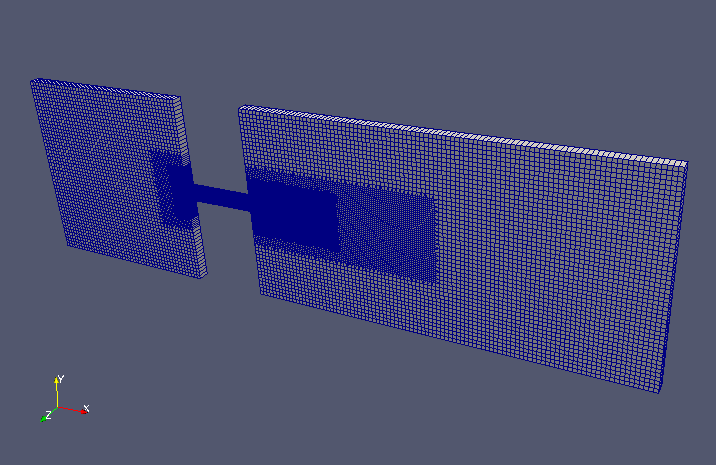 Mesh (entire)
Mesh (entire)
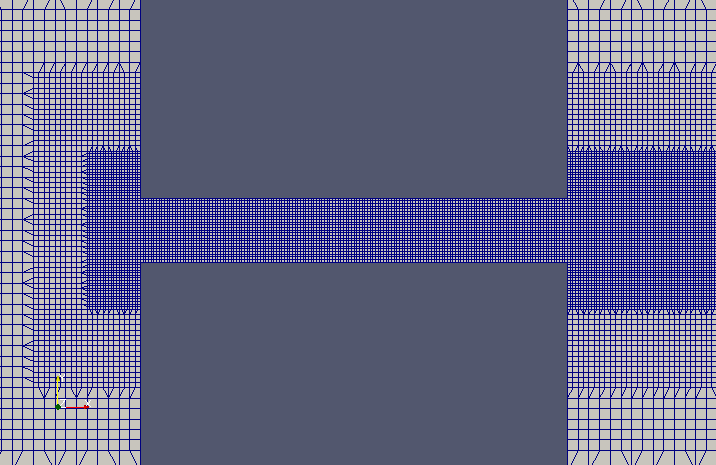 Meshes (narrow part)
Meshes (narrow part)
The calculation result is as follows.
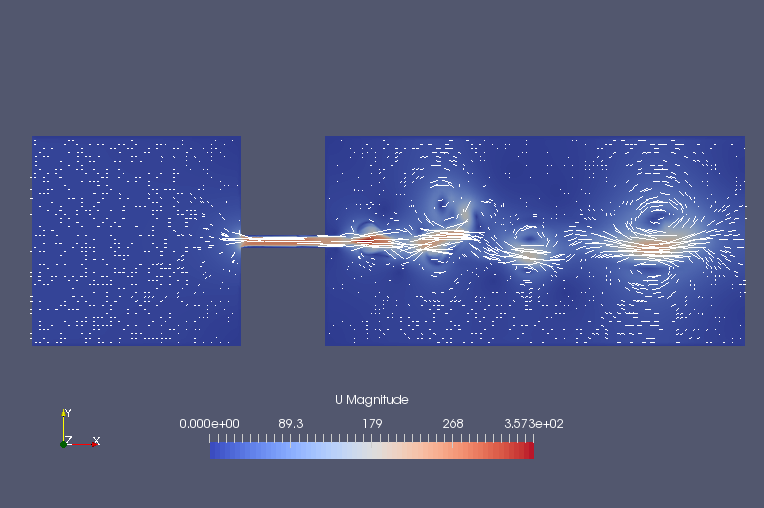 Flow velocity at 0.00012 sec (U)
Flow velocity at 0.00012 sec (U)
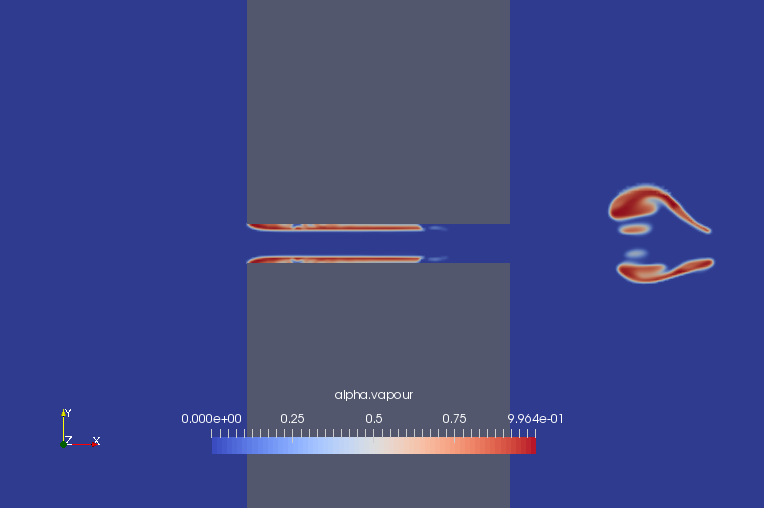 Volume ratio of vapor near narrow part at 0.00012 sec (alpha.vapour)
Volume ratio of vapor near narrow part at 0.00012 sec (alpha.vapour)
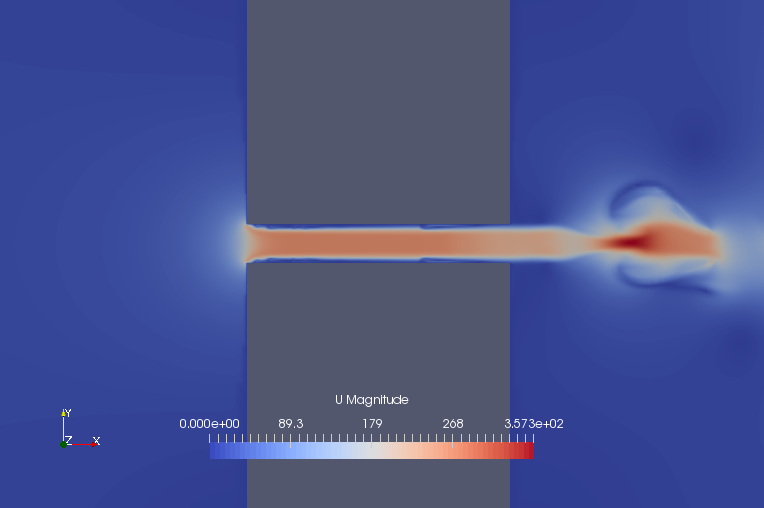 Flow velocity near narrow part at 0.00012 sec (U)
Flow velocity near narrow part at 0.00012 sec (U)
Commands
cd throttle
blockMesh
cp system/topoSetDict.1 system/topoSetDict
topoSet
refineMesh -dict system/refineMeshDict -overwrite
cp system/topoSetDict.2 system/topoSetDict
topoSet
refineMesh -dict system/refineMeshDict -overwrite
cp system/topoSetDict.3 system/topoSetDict
topoSet
refineMesh -dict system/refineMeshDict -overwrite
cavitatingFoam
paraFoam
Three levels of coarseness are applied to the mesh using the utilities topoSet and refineMesh. Depending on the computing environment, the solver may stop in calculation. In that case, run the command "cavitatingFoam" again to restart the calculation.
Calculation time
22 minutes 56.57 seconds *Single, Inter(R) Core(TM) i7-2600 CPU @ 3.40GHz 3.40GHz